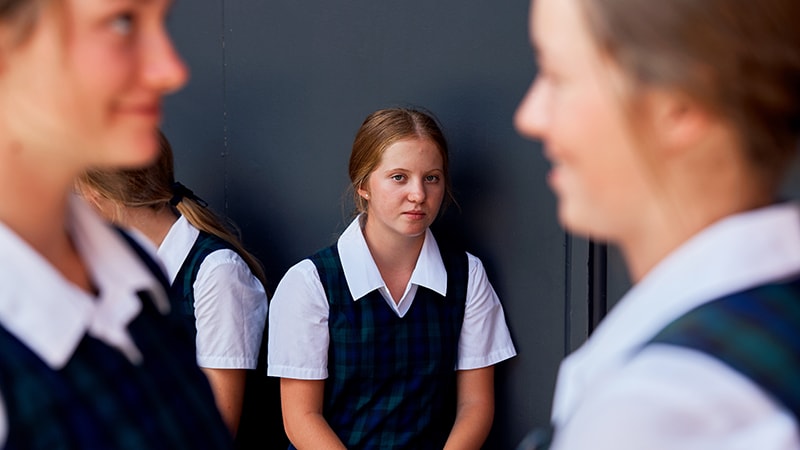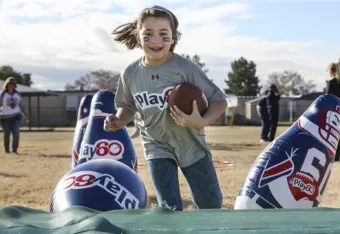We see that it can be shocking as well as upsetting to learn that the child has gotten in trouble for picking on other kids or been labeled a troubler in these ways. We see that as hard as it may be to hear this news, we know that it’s important to deal with it right away as well. We know that whether the teasing is physical or verbal if it’s not stopped it can lead to more aggressive antisocial behavior as well as interfere with their child’s success in school and ability to form and keep friendships as well. We see that students have trouble for many reasons. We know that some trouble because they feel insecure. We see that picking on someone who seems emotionally or physically weaker provides a feeling of being more important, popular, or in control as well. In other cases, we see that kids have trouble because they simply don’t know that it’s not fine to pick on kids who are different because of size, as well as looks, race, or maybe other things. We see that in some cases troubling is a part of a pattern of defiant or aggressive behavior as well. We see that these kids are likely to need help learning to manage anger as well as hurt, frustration, or other strong emotions too. We see that they may not have the skills they need to cooperate with others as well. We see that therapy often can help them learn to deal with their feelings, curb their troubles, as well as improve their social skills too. We see that some kids who have trouble are copying behavior that they see at home as well. We see that students who see aggressive, as well as unkind interactions in the family, often learn to treat others the same way. We see that students who are taunted learn that troubling can translate into control over children they see as weak as well. We see that the Education app that can be used in Classroom can be an effective way to see how things work out for them.
They must also take trouble seriously. They must make sure their kids understand that they will not tolerate that at home or anywhere else. They must set rules about troubling as well as stick to them. If they punish their child by taking away privileges, they must be sure it’s meaningful. For example, if their child troubles other kids via email, or a social networking site, stop phone as well as computer privileges for some time. If their child acts aggressively at home, maybe with siblings or others, put a stop to it. They must teach more appropriate (as well as nonviolent) ways to react, like walking away as well. They must teach kids to treat others with respect as well as kindness. They must teach their child that it is wrong to ridicule differences like race, religion, appearance, special needs, as well as gender, and economic status. They must try to instill a sense of empathy for those who are different as well. They must consider getting involved together in a community group where their child can interact with kids who are different as well. They must learn about their child’s social life. They must look for insight into what may be influencing their child’s behavior at school (or wherever the troubling happens as well). They must talk with the parents of their child’s friends as well as peers, teachers, guidance counselors, and the school principal. Do other kids trouble is the question they must ask. What about their child’s friends? What kinds of pressures do the kids face at the institution? They must talk to their kids about those relationships as well as about the pressures to fit in. They must get them involved in activities outside of school so that they meet as well as develop friendships with other kids. They must encourage good behavior as well. There is some positive reinforcement that can be more powerful than negative discipline as well. They must catch their kids being good. We see that when they handle situations in positive ways, they must take notice and praise them for it. We see that it’s natural — as well as common — for kids to fight with their siblings at home as well. And unless there’s a risk of physical violence, we see that it’s wise not to get involved. We see that they can keep an eye on the name-calling as well as fighting, and talk to each child regularly about what’s acceptable and what’s not. They must keep their behavior in check too. They must think about how they talk around their kids and how they handle conflict as well as problems. We see that kids who live with yelling, name-calling, putdowns, harsh criticism, as well as physical anger from a sibling or parent/caregiver may act that out in other settings. If they behave aggressively — toward or in front of their kids — chances are they’ll follow their example. Instead, they must point out positives in others, not negatives. We see that when conflicts arise in your own life, be open about their frustration and how they cope with their feelings. We see that there will be situations that need discipline as well as helpful criticism. But we see that they don’t let that slip into name-calling as well as accusations. If they don’t like their child’s behavior, we see that stress that it’s the behavior that they would like their child to change, and they have confidence that they can do it as well. We see that as frustrating as it can be to help kids stop harassing, they must remember that bad behavior won’t stop on its own as well. They must think about the success as well as the happiness they want their kids to find in school, as well as work, and in relationships throughout life too.










